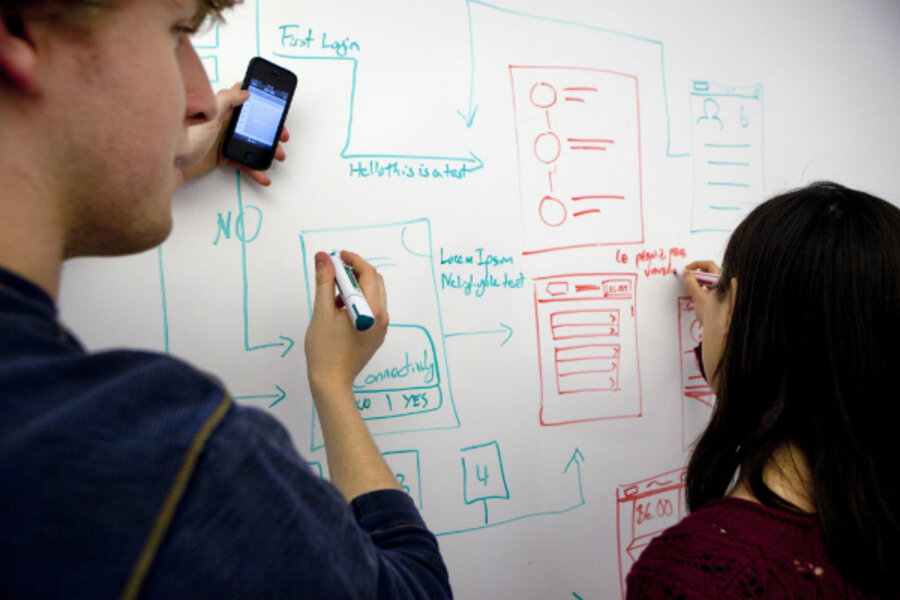App-driven life: When in Rome, you can turn lights on back home
Loading...
Now that most phones connect to the Internet, how about your light bulbs? Dutch electronics giant Philips trotted out a new kind of bulb last year – one of the first to come with its own Internet router.
These Philips Hue bulbs can be controlled by your Android or iPhone, allowing you to turn them on and off from the couch or ... from another country. The Hue application lets you adjust the brightness and color of each bulb individually and then program different settings for certain situations.
Dinner time? Maybe dim the lights to 70 percent brightness and give them a slightly reddish tint. New painting that you want to show off? Take a photo of the artwork with your phone and then tell the lights to match certain colors from the image.
In tests done by the Monitor, the Hue bulbs seem well designed, even though the app is not that intuitive. Perhaps foreseeing this problem, Philips opened up the software that runs these lights, allowing programmers to craft their own Hue apps. Already, Apple's online store has a 99-cent homemade disco app called Magic Hue that can take control of the Philips bulbs and tell them to pulsate in tempo with music.
Each of the LED bulbs shines with the strength of a 50-watt incandescent, but sips just 8.5 watts of power – an energy efficiency similar to that of curlicue compact fluorescents.
However, Wi-Fi lights aren't cheap. A starter kit of three bulbs and a router costs $200. Each additional light is $60. Competitor GreenWave Reality offers a four-pack of colorless, app-powered lights and a router for $200, with extra bulbs costing $20 apiece.







